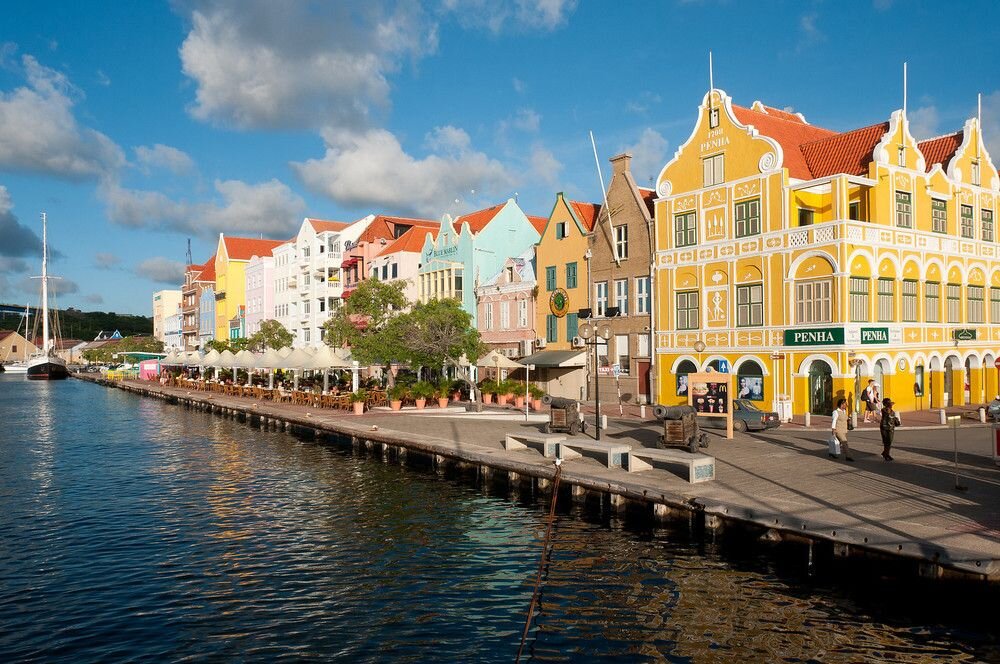
45 mins to Little Amsterdam
UNESCO City
Holland established a trading settlement in the deep natural harbour of Curaçao in 1634. It is a mini-Amsterdam with remnants of Spanish and Portuguese colonial architecture. Willemstad is an exceptionally well preserved as a UNESCO protected city and is an incredible example of the Dutch colonial trading period. Interestingly, the use of traditional building materials and techniques, such as coral stone and lime mortar, is encouraged in the restoration and repair of historic buildings.
Oldest Synagogue
The Mikvé Israel-Emanuel Synagogue is the oldest surviving synagogue in the Americas. The community dates from the 1650s, and consisted of Spanish and Portuguese Jews from the Netherlands and Brazil. It is an active synagogue and allows participants to attend Shabbat services on Friday night and Saturday morning.
It is a remarkable building with sand floors remind congregants how Jews used sand to muffle the sound of prayer during the inquisition.
In the 1630s, the Dutch West India Company was searching for a new outpost in the Caribbean. The company set its sight on Curaçao, which was then a Spanish possession. In 1634, the Dutch captures the island. They immediately ordered the construction of a fort at the mouth of the Sint Anna Bay. Slaves brought from Angola built the fort.
The fort was designed with three meter wide walls. In 1804, a cannonball fired at the fort hit the fort’s church. The ball is still embedded in the southwestern wall of the fort church.
Hato Caves
These beautiful caves where created under the sea from coral limestone deposits over millions of years. When the sea levels dropped, the caves went through additional corrosion and erosion caused by the air and water.
1,500 years ago the caves were home to Amerindian Arawaks and Caiquetio Indians leaving behind numerous cave drawings. Before the abolition of slavery in Curacao, runaway slaves used the caves to hide.
Dolphin Academy
Swim or dive with dolphins! The Dolphin Academy is an amazing experience allowing for natural interaction between you and the dolphins. For both young and old. Swim with dolphins in either their natural lagoon or the open sea.
Tell them we sent you :)
Ostrich Farm
While Ostriches are not native to this desert island, head to Groot St. Joris in Santa Catharina and have a slice of South Africa. Play with chicks.
Tell them we sent you :)
Bees
While in Curacao you can visit a Bee farm. Bazbina Farms professional beekeepers to guide you through the beehives, a tour and presentation of the life of a bee and of course some honey tasting.
Curacao has several species of bees, including the Africanized honey bee, which was introduced to the island in the 1980s.
The Africanized honey bee, also known as the "killer bee," is a more aggressive and territorial species than other honey bees, and has been known to attack animals.
We have wild bees at the villa. You will see them drinking the sweet water around the pool. They nest under the cliff and play an important role in the Watamula ecosystem.
Dive
Explore the magic of the reef.








